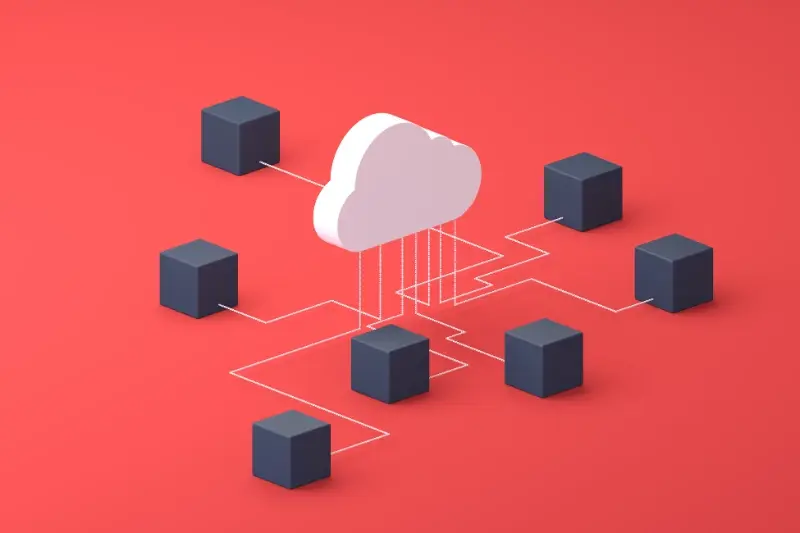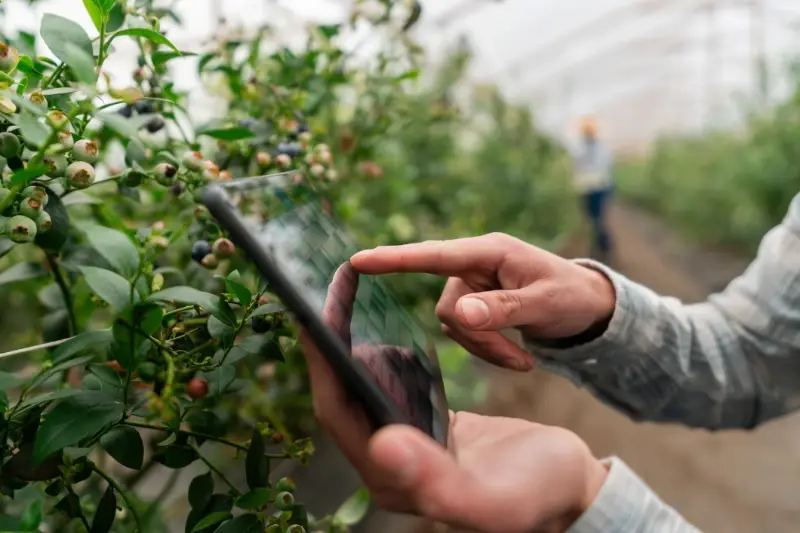Food Delivery App Success Stories: What We Can Learn From the Winners
You've got a brilliant food delivery app idea. The concept is solid, the features are well thought out, and you're ready to change how people order their meals. But then reality hits—how do you actually make it successful? The food delivery market is packed with apps that seemed promising but never took off, and frankly, it's tough to know what separates the winners from the apps that disappear after six months.
I've worked on countless food delivery projects over the years, and one thing I've learned is that great ideas alone don't guarantee success. The real winners in this space didn't just build good apps; they solved specific problems in ways that made sense for their market. Some focused on partnerships, others leveraged existing customer bases, and a few found their niche by going premium when everyone else was racing to the bottom.
Success in food delivery isn't about having the flashiest app—it's about understanding your market better than anyone else and executing relentlessly on that understanding.
That's why we're looking at the success stories and case studies of the big players who actually made it work. Each of these companies took different paths to success, made different strategic decisions, and faced different challenges. By understanding what worked for DoorDash, Uber Eats, Deliveroo, and others, we can identify the patterns that matter—not just the obvious stuff, but the strategic moves that really made the difference. Whether you're planning your first food delivery app or trying to figure out why your current one isn't gaining traction, these stories offer practical lessons you can actually use.
DoorDash: How Smart Partnerships Built an Empire
When DoorDash started out, they weren't trying to reinvent the wheel—they just wanted to make it spin faster. The company began in a university town where getting decent food delivered was nearly impossible. But here's what made them different from the start: they didn't just focus on building a fancy app.
Instead, they got obsessed with partnerships. Not the boring kind where you shake hands and hope for the best, but real working relationships that made sense for everyone involved. They went straight to restaurants that had never offered delivery before and said "we'll handle everything." The packaging, the drivers, the customer service complaints—the lot.
The Restaurant-First Approach
Most food delivery apps at the time were trying to work with restaurants that already did delivery. DoorDash flipped this completely. They targeted places that had given up on delivery because it was too much hassle. Small family restaurants, popular lunch spots, even some chain locations that corporate had written off as "delivery impossible."
This meant they could offer customers restaurants they couldn't get anywhere else. Suddenly you could order from that brilliant Indian place that never delivered before, or get your favourite breakfast spot brought to your door on Sunday morning.
Building the Infrastructure Others Ignored
While competitors focused on big cities and obvious markets, DoorDash quietly built networks in smaller cities and suburbs. They realised that a family in the suburbs ordering pizza on a Tuesday night was just as valuable as a busy professional in central London—maybe more so, because there was less competition.
They also invested heavily in their driver network, creating systems that made it genuinely appealing to work for them. Better routing, clearer communication, and most importantly, they made sure drivers could actually make decent money.
The result? A delivery empire built on solid foundations rather than flashy marketing. Sometimes the boring stuff—like good partnerships and reliable service—wins in the end.
Uber Eats: The Power of Existing Customer Bases
When Uber launched their food delivery service, they had something most startups can only dream of—millions of people already using their app. That's a pretty solid head start, isn't it? Instead of building from scratch like most food delivery companies, Uber Eats could tap into an existing customer base that already trusted the brand and had payment details stored.
The success story here isn't just about having customers already; it's about how they used them. Uber's existing users were already comfortable with the concept of requesting something through an app and tracking its arrival in real-time. The leap from "get a ride" to "get food delivered" wasn't exactly rocket science for users—the interface felt familiar, the payment process was seamless, and the tracking system worked just like their taxi service.
Smart Integration Strategy
What made Uber Eats particularly clever was how they integrated the service into their existing app initially, rather than creating a separate platform straight away. Users could switch between rides and food with a simple tap. This cross-pollination meant their ride customers naturally discovered the food delivery option, and food customers might try their transport service too.
Leveraging Existing Infrastructure
Beyond customers, Uber already had the technical infrastructure, payment systems, and crucially, a network of drivers. Many Uber drivers could switch between passengers and food deliveries, maximising their earning potential whilst giving Uber Eats instant delivery capacity.
If you're building a new app feature or service, look at your existing user base first. What do they already trust you for, and how can you extend that trust into new areas?
Just Eat: Making Local Restaurants Global
Just Eat started with a simple idea that sounds almost quaint now—helping people order takeaway from local restaurants without having to phone them up. Back when this was still a novel concept, they figured out something that many other food delivery apps missed: the real goldmine wasn't in the flashy tech or the fancy marketing, but in building proper relationships with small, independent restaurants.
What made Just Eat different was their approach to expansion. Instead of trying to conquer one massive market, they went wide—really wide. They started snapping up local food ordering platforms across Europe, each time keeping the local knowledge and restaurant relationships that came with them. This wasn't just smart business; it was brilliant strategy disguised as common sense.
The Local-First Strategy
Most food delivery apps focus on the big chains and trendy restaurants in city centres. Just Eat took a different route—they went after every local curry house, pizza place, and family-run restaurant they could find. This meant that when you opened Just Eat, you'd see options that actually reflected your neighbourhood, not just the places with the biggest marketing budgets.
Key Success Factors
Looking at Just Eat's growth, several patterns emerge that any food delivery app can learn from:
- They prioritised restaurant relationships over flashy features—building trust with business owners who'd never used online ordering before
- Their acquisition strategy preserved local market knowledge rather than imposing a one-size-fits-all approach
- They focused on reliability and simplicity rather than trying to be the most innovative platform
- Geographic expansion happened methodically, ensuring each market was properly served before moving to the next
The lesson here is clear: sometimes the most sustainable path to global success is understanding that every market is fundamentally local. Just Eat didn't try to revolutionise food delivery—they just made it work better for everyone involved.
Deliveroo: When Premium Positioning Pays Off
Most food delivery apps fight over price and speed. Deliveroo decided to go a completely different route—they positioned themselves as the premium option from day one. While their competitors were racing to be the cheapest, Deliveroo focused on quality restaurants, better packaging, and higher-end customer service.
The company launched with a simple but powerful idea: people would pay more for better food delivered properly. Instead of partnering with just any restaurant that would sign up, they were selective about who they worked with. They targeted restaurants that didn't traditionally do delivery—the kind of places you'd normally have to sit down to enjoy.
The Premium Strategy That Worked
Deliveroo's approach was risky; charging higher delivery fees when cheaper options existed seemed like commercial suicide. But they understood something their competitors missed—there was a market of people who cared more about quality than saving a few pounds. They invested in better packaging, trained their delivery riders properly, and made sure the food arrived looking as good as it would in the restaurant.
We're not trying to be the cheapest option out there. We're trying to be the best option for people who care about what they eat
This premium positioning allowed Deliveroo to build higher profit margins whilst still growing rapidly. They proved that in the food delivery space, there's room for different approaches. Sometimes being more expensive can actually be an advantage—if you can deliver the quality to match the price point.
Grubhub: The First Mover Advantage Story
Sometimes being first really does matter—and Grubhub is proof of that. Back when most people were still picking up the phone to order takeaway, Grubhub was already building the foundation for what would become a massive food delivery empire. They didn't just stumble into success; they spotted an opportunity before anyone else did and ran with it.
The company started by solving a simple problem that every hungry person could relate to: finding restaurants that would actually deliver to your area. Before smartphones made everything easy, this meant keeping a drawer full of crumpled menus or hoping the pizza place down the road was still open. Grubhub created an online platform that brought all these options together in one place—revolutionary at the time, obvious in hindsight.
Building the Network Effect
What made Grubhub really clever was how they built their business model around restaurants rather than trying to handle delivery themselves. They focused on being the middleman, which meant they could scale much faster than competitors who tried to do everything in-house. This approach helped them establish strong relationships with restaurant owners early on, creating a network that became harder for newcomers to replicate.
Key Success Factors
- Started before the market was crowded with competitors
- Focused on restaurant partnerships rather than building their own delivery fleet
- Built comprehensive restaurant databases in major cities
- Established brand recognition when the concept was still new to consumers
- Created loyalty through consistent service quality
The lesson for app developers is clear: timing matters, but execution matters more. Being first gives you a head start, but you still need to deliver a product that actually works and solves real problems for real people.
Zomato: From Discovery to Delivery Success
Zomato's journey tells one of the most interesting transformation stories in food tech. The company didn't start as a delivery platform at all—it began as a restaurant discovery service, helping people find good places to eat and read reviews. Think of it as the early version of finding restaurants online before everyone had smartphones.
What makes Zomato's case study so compelling is how they managed to pivot their entire business model. They had built up this massive database of restaurants and user reviews, but they spotted an opportunity that many others missed. Instead of just helping people find restaurants, why not help restaurants reach customers directly?
The Smart Pivot Strategy
The transition wasn't rushed—and that's what made it work. Zomato used their existing relationships with restaurants and their understanding of local food scenes to build their delivery network. They already knew which restaurants were popular, what food people wanted, and where the demand was highest.
Don't throw away your existing strengths when pivoting. Zomato's restaurant database and local market knowledge became their biggest competitive advantages in delivery.
Key Success Factors
Several elements drove Zomato's successful transformation:
- Strong local market presence in multiple countries
- Existing restaurant relationships and trust
- Deep understanding of food preferences by region
- User base that already trusted their food recommendations
- Data-driven approach to expansion and menu optimisation
What's particularly smart about Zomato's approach is how they maintained their discovery features while adding delivery. Users could still browse restaurants, read reviews, and discover new places—but now they could order directly through the app. This kept their original value proposition whilst adding a revenue-generating service that restaurants and customers both wanted.
Common Patterns Among Food Delivery Winners
After looking at all these successful food delivery apps, some clear patterns start to emerge. It's not just luck that made these companies winners—they all did certain things really well, and understanding these patterns can help anyone building their own app.
The biggest pattern I've noticed is that they all solved a real problem that people actually had. DoorDash didn't just build an app because food delivery seemed trendy; they saw that people in smaller cities couldn't get food delivered and fixed that gap. Uber Eats used their existing driver network to make delivery cheaper and faster. Each winner identified something that wasn't working properly and made it better.
Technology That Actually Helps
Every successful food delivery app invested heavily in making their technology work smoothly. Real-time tracking, accurate delivery times, easy payment systems—these aren't flashy features, but they're the foundation that everything else builds on. Users don't care how clever your app is if their order arrives cold or late.
Building Strong Relationships
All the winners understood they had three groups to keep happy: customers, restaurants, and delivery drivers. The apps that failed usually focused on just one group and ignored the others. Successful companies found ways to make money whilst keeping all three sides satisfied—not always easy, but absolutely necessary.
Perhaps most importantly, these companies didn't try to do everything at once. They started with one thing they could do really well, proved it worked, then gradually expanded. That's a lesson worth remembering for any app project.
Conclusion
After looking at these food delivery success stories, one thing becomes clear—there's no single magic formula for winning in this space. Each company found their own path to the top, whether it was DoorDash's clever partnerships, Uber Eats leveraging their existing rideshare users, or Deliveroo betting on premium positioning. The diversity in approaches is actually quite refreshing; it shows that innovation can come from many different angles.
What I find most interesting is how these case studies reveal patterns that apply far beyond food delivery. The companies that succeeded didn't just copy what others were doing—they identified gaps in the market and filled them with purpose. They understood their customers deeply and built solutions around real problems people were facing.
If you're planning your own app venture, these stories offer valuable lessons. Don't feel pressured to reinvent the wheel completely; sometimes the smartest move is taking an existing concept and executing it better than anyone else. Focus on what makes your approach different—whether that's superior technology, better partnerships, or simply understanding your local market better than the competition.
The food delivery giants we've examined all started somewhere small. They faced the same challenges you might be facing right now: limited budgets, fierce competition, and the constant pressure to prove their worth. But they persevered, adapted their strategies when needed, and most importantly, never lost sight of what their customers actually wanted. That's the real takeaway from these success stories.
Share this
Subscribe To Our Blog
You May Also Like
These Related Stories

Edge Computing vs Cloud Computing: Which Is Right for Your App?

Last-Mile Delivery Apps: How to Build Technology That Actually Delivers





